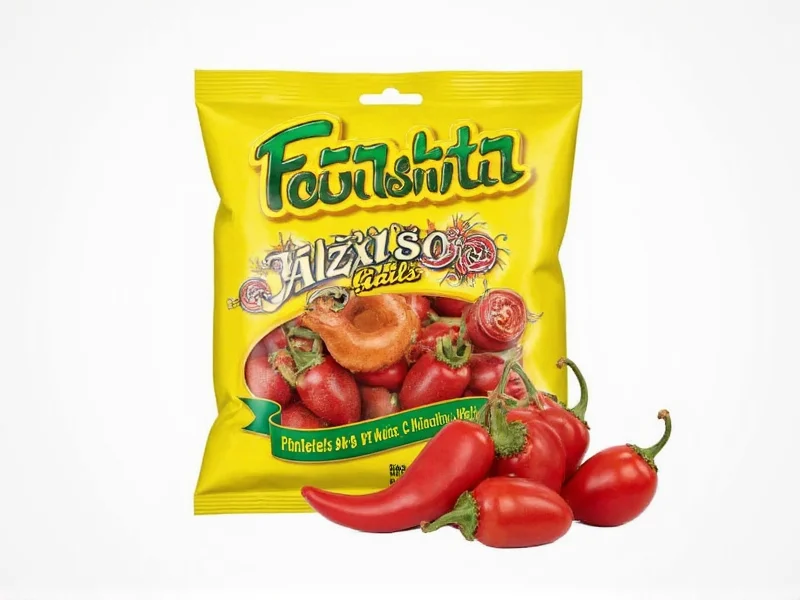The best Anaheim chile substitutes are poblano peppers (nearly identical flavor with slightly more heat), Cubanelle peppers (milder alternative), bell peppers (for zero-heat applications), and jalapeños (use half the amount for spicier dishes). For most recipes, poblano peppers provide the closest match in flavor profile and culinary functionality.
When your recipe calls for Anaheim chiles but you can't find them, knowing the right substitute makes all the difference in your final dish. Anaheim peppers, also known as California chiles, bring a mild heat (500-2,500 Scoville units) with earthy, slightly sweet flavor that's essential in Southwestern and Mexican cuisine. Understanding proper substitutions ensures your enchiladas, chiles rellenos, and stews maintain their intended flavor profile without unexpected heat levels.
Understanding Anaheim Chile Characteristics
Anaheim peppers (Capsicum annuum) originated in New Mexico but became popularized in California. They typically measure 6-10 inches long with thin walls, turning from green to red as they mature. Their moderate heat level makes them versatile for stuffing, roasting, and adding to sauces. When seeking substitutes, consider three key factors: heat level, flavor profile, and texture.
Heat Level Comparison of Common Substitutes
| Pepper Variety | Scoville Heat Units | Relative Heat to Anaheim | Best For |
|---|---|---|---|
| Anaheim (reference) | 500-2,500 | 1x | All-purpose Southwestern cooking |
| Poblano | 1,000-2,000 | Slightly hotter | Chiles rellenos, mole sauces |
| Cubanelle | 100-1,000 | Milder | Stuffed peppers, Italian dishes |
| Bell Pepper | 0 | No heat | Kid-friendly recipes, canning |
| Jalapeño | 2,500-8,000 | 2-3x hotter | Salsas, spicy sauces (use less) |
Top Anaheim Chile Substitutes Explained
Poblano Peppers: The Closest Match
For most recipes requiring Anaheim chiles, poblano peppers serve as the ideal substitute. These dark green, heart-shaped peppers share similar earthy notes with just a touch more heat. When preparing anaheim chile substitute for enchiladas, use poblano peppers roasted and peeled for authentic texture. Their thicker walls hold up well to stuffing, making them perfect for chiles rellenos. One poblano generally replaces one Anaheim in recipes, though you may want to remove seeds if serving heat-sensitive guests.
Cubanelle Peppers: Mild Alternative
Cubanelles offer the closest shape match to Anaheim peppers with even thinner walls. Their heat level sits at the lower end of the Anaheim spectrum, making them excellent for mild anaheim pepper replacement needs. Italian and French cuisines commonly use Cubanelles, so they're often available in supermarkets year-round. When substituting in stuffed pepper recipes, use a 1:1 ratio, but consider adding a pinch of smoked paprika to replicate Anaheim's subtle smokiness.
Bell Peppers: Zero-Heat Solution
When you need a complete absence of heat, bell peppers become your best option for anaheim chile substitute for canning or family-friendly dishes. Green bells provide similar color and texture, while red or yellow bells add sweetness. Use 1 bell pepper for every 1-2 Anaheim peppers depending on recipe intensity. For dishes like green chile stew, add 1/4 teaspoon of cumin per pepper to compensate for lost earthy notes.
Jalapeños: For Spicier Applications
If your recipe can handle more heat, jalapeños work as a substitute when used judiciously. Remember that what pepper can I use instead of anaheim depends on your heat tolerance—use only half the amount of jalapeños compared to Anaheim peppers. Remove all seeds and membranes to reduce heat while maintaining flavor. This substitution works particularly well in salsas and bean dishes where additional spice enhances rather than overwhelms.
Recipe-Specific Substitution Guide
Not all substitutes work equally well across different dishes. Consider these recommendations when how to replace anaheim chiles in recipes:
- Chiles Rellenos: Poblano peppers (traditional preparation actually uses poblanos)
- Green Chile Stew: 2 parts poblano + 1 part bell pepper for balanced heat
- Enchilada Sauce: Roasted Cubanelles with a pinch of smoked paprika
- Canned Green Chiles: Pureed bell peppers with tomatillo for acidity
- Stuffed Peppers: Cubanelles for easiest preparation
Preparation Tips for Successful Substitution
Proper preparation makes your substitute more effective. Always roast and peel your substitute peppers when the recipe specifies roasted Anaheim chiles. For fresh applications, consider these adjustments:
- When using milder substitutes like Cubanelles, add 1/8 teaspoon of chipotle powder per pepper
- For canned applications, include 1 tablespoon of roasted garlic per cup of peppers
- If substituting jalapeños, soak in ice water for 10 minutes after seeding to reduce heat further
- Freeze substitutes in recipe-sized portions for future use
Availability and Storage Considerations
Anaheim peppers peak in late summer through fall, making substitutes necessary during off-seasons. Poblano peppers maintain year-round availability at most supermarkets, while Cubanelles appear more consistently in larger grocery chains. For long-term storage, freeze roasted substitute peppers in airtight containers for up to 6 months—this works particularly well for anaheim chile alternative with same heat level needs in future cooking projects.
Common Substitution Mistakes to Avoid
Many home cooks make these errors when seeking Anaheim chile replacements:
- Using hotter peppers without adjusting quantities (habaneros are 20x hotter!)
- Substituting dried peppers without rehydration (use 1 dried New Mexico chile = 3 fresh Anaheims)
- Ignoring texture differences (thick-walled substitutes don't char the same)
- Not tasting as you go when adjusting recipes











 浙公网安备
33010002000092号
浙公网安备
33010002000092号 浙B2-20120091-4
浙B2-20120091-4